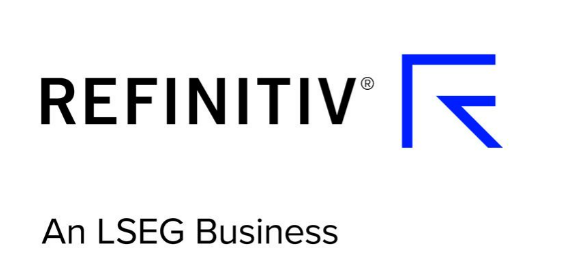
Source: Sharecast
Patrick Munnelly, market strategy partner at TickMill, noted that “Asian markets soared to new heights, surpassing their previous record close, as hopes of easing trade tensions brought renewed optimism.
“This positive sentiment followed a period of market turbulence fuelled by concerns over US regional banks.
“MSCI's regional stock index climbed over 1.51%, with futures signalling gains in both US and European markets.”
Tokyo stocks surge on solid day for region
In Japan, stocks surged to record levels after reports that the ruling Liberal Democratic Party and the Japan Restoration Party had effectively reached an agreement to form a coalition government.
The Nikkei 225 jumped 3.47% to close at a fresh all-time high of 49,235.00, while the broader Topix index gained 2.46% to 3,248.45.
Heavyweights led the rally, with SoftBank Group soaring 8.49%, Yaskawa Electric rising 7.21%, and Fanuc Corporation climbing 6.49%.
Munnelly said that “Japan led the charge, with its stock market surging over 3%, driven by expectations that pro-stimulus candidate Sanae Takaichi might become Japan's next prime minister.
“The yen also strengthened on these predictions.”
Chinese markets also posted gains after third-quarter GDP growth came in line with expectations from analysts polled by Reuters, suggesting steady economic momentum despite subdued global demand.
The People’s Bank of China left benchmark lending rates unchanged, as widely anticipated.
The Shanghai Composite rose 0.63% to 3,863.89, while the Shenzhen Component added 0.98% to 12,813.21.
Among notable movers, Fujian Qingshan Paper Industry, Shaanxi Heimao Coking Company, and Bestsun Energy each surged by around 10%.
“Chinese equities advanced despite data showing the country’s economic growth had slowed to its weakest pace in a year,” Munnelly observed.
Hong Kong’s Hang Seng Index climbed 2.42% to 25,858.83, supported by strong performances from technology and energy firms.
NetEase gained 5.18%, PetroChina advanced 5.05%, and Alibaba Group rose 4.86%.
South Korea’s Kospi 100 added 1.85% to 4,058.98, lifted by financials and electronics.
Mirae Asset Daewoo Securities rallied 17.17%, Korea Investment Holdings rose 14.02%, and LG Electronics gained 8.08%.
Elsewhere, Australia’s S&P/ASX 200 advanced 0.41% to 9,031.90, with Lynas Rare Earths up 6.6%, Generation Development Group up 4.4%, and Zip Co up 4.3%.
In New Zealand, the S&P/NZX 50 increased 0.42% to 13,344.96, driven by NZX, which gained 2.66%, Mercury NZ up 2.47%, and Ryman Healthcare up 2.19%.
In currency markets, the US dollar edged higher against the yen and the Australian dollar, trading at JPY 150.76 and AUD 1.5408 respectively, while easing slightly against the New Zealand dollar to NZD 1.7459.
Munnelly noted that “in the bond market, US Treasury yields edged higher, with the 10-year yield rising by one basis point to trade above 4%.
“The dollar index held steady, while oil prices dipped after three consecutive days of gains.”
Oil prices weakened on the day, with Brent crude futures last down 0.44% on ICE at $61.02 per barrel, and the NYMEX quote for West Texas Intermediate down 0.49% at $57.26.
Chinese economic growth slows as expected
On the data front, China’s economy grew 4.8% in the third quarter, matching expectations but marking its weakest pace in a year, underscoring the country’s growing reliance on exports amid faltering domestic demand.
The slowdown reinforced concerns about deepening structural imbalances, as manufacturers leaned on foreign orders to offset sluggish consumer spending and a prolonged property downturn.
Beijing’s focus on external demand was coming at a sensitive time, with vice premier He Lifeng due to meet US Treasury secretary Scott Bessent in Malaysia this week and a potential meeting between presidents Donald Trump and Xi Jinping expected in South Korea later this month.
The data revealed an uneven recovery.
Industrial output rose 6.5% year-on-year in September, the strongest in three months and ahead of forecasts, while retail sales growth slowed to a 10-month low of 3.0%.
The property sector remained a major drag, with new home prices falling at their fastest pace in nearly a year and investment in real estate slumping 13.9% in the first nine months.
The imbalance had reportedly forced many exporters to compete aggressively on price abroad, eroding profit margins and prompting wage and job cuts at home.
Against that backdrop, the People’s Bank of China left its key lending benchmarks unchanged for a fifth consecutive month, holding the one-year loan prime rate at 3.0% and the five-year rate at 3.5%.
The decision, in line with market expectations, reflected policymakers’ caution ahead of the Communist Party’s Fourth Plenum, which runs from October 20 to 23 and would set the country’s medium-term economic priorities.
In New Zealand, inflation came in at 3% in the September quarter, precisely matching the Reserve Bank’s forecast and suggesting steady progress toward price stability.
While higher council rates and food costs contributed to the headline figure, underlying pressures continued to ease.
Non-tradable inflation fell to 3.5%, while tradable inflation held at 2.2%, keeping core measures comfortably within the central bank’s 1% to 3% target band.
The data bolstered expectations that the RBNZ could begin cutting rates as soon as November, as policymakers signalled growing confidence that price growth was returning to sustainable levels.
Reporting by Josh White for Sharecast.com.


